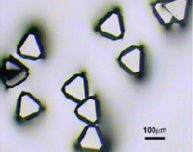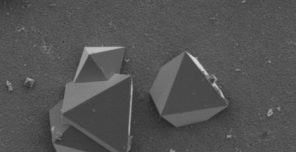Innovative Tunable Ultra-High Surface Area Sorbents for Sour Gas Separation, CO2 Capture and Gases Purification
Highly stable ultrahigh porous metal-organic framework based sorbents for refinery industry and environmental control

Recently scientists developed a novel type of self-assembled porous crystalline materials, constructed of metal clusters and organic linkers, named metal organic frameworks (MOFs). These materials were designed to provide regular-pores sorbents with an adjustable size of cavities, channels, and apertures. Varying nature and connectivity of building blocks in the MOFs innovators at KAUST developed custom made materials with different accessibility of cages or channels with designed shapes and size of windows what allows tuning of framework’s permeability and surface area. Tunability of voids of these sponge-type materials through designed and controllable cages formation enabling deliberate alteration of their properties for particular applications such us CO2/H2S/H2O removal from natural gas; iso-paraffins/linear paraffin separation; selective gasses capture and storage for H2, CH4, CO2; dehumidification and moisture level control in confined space.
Technology Summary
MOF sorbents are produced in-situ through hydrothermal synthesis by mixing metal cluster precursors and organic linker in appropriate solvents/solvents system and heating of reaction mixture. Resulted sorbents are crystalline and they possess regular periodic well-defined and characteristic size and shape of pores. Unlike the previously known sorbents with irregular size and shape of pores, novelty of MOF materials is in defined specific porosity.
How It Works
Customizing MOF materials by varying nature and connectivity of building blocks in the MOFs we could target defined specific size and shape of pores in sorbents. By changing metal cluster nature, we could adjust the size and connectivity of the crystal lattice nodes. By varying of organic ligands nature, we could tune the connectivity and length of the edges in crystal cell.
The size of the pores in MOF sorbents determines gas adsorption mechanisms.
In particular, tuning of MOF cavity size from 6 Angstroms to 5 Angstroms and finally to 4.7 Angstroms allow affords separation gents driven by equilibrium based adsorption, kinetic based separation and full molecular sieving, respectively.
Why It Is Better
The innovation of MOF sorbents is in defined specific porosity of these crystalline materials that allows performing extremely selective gas permeation/capture. Further more the possibility to vary mechanisms of adsorption/separation process allows additional control for selectivity and rates of gas permeation/capture.
Based on fine-tuning of MOFs pores nature, several unique solutions were developed:
- first-ever sorbent for branched-paraffins vs. linear paraffins separation was synthesized;
- first-ever sorbent for humidity control in confine space was produced (RE-shp-MOF possess reversible vapor adsorption/desorption properties based on relative humidity of the environment);
- best performing MOF for removal of ppm level of CO2 was obtained.
IP Protection
KAUST has a patent pending for this technology.
Invention Track Code
2013-035

Benefits
- Selectivity: regular and specific pore size of sorbents allows permeation for only determined molecules
- Tunability: size of cavities, channels and apertures might be adjusted for particular gas permeation/capture
- Unique solution fuel upgrading: apertures in RE-Fum-Fcu-MOF are designed for branched-paraffins vs. linear paraffins separation
- Unique solution for humidity control: RE-shp-MOF possess reversible vapor adsorption/desorption properties based on relative humidity of the environment
- Stability/Reusability: RE-shp-MOF sorbent could survive hundreds of adsorption/ desorption cycles without loss of efficiency

Potential Applications
- Development of OC diagnostic kits
- Central laboratory testing
- Point-of-care diagnostics
- Complementary diagnostics for pharmaceuticals
- Personalized medicine
- Pharmaceutical screening research
- Test development for clinical genomics and diagnostics companies
